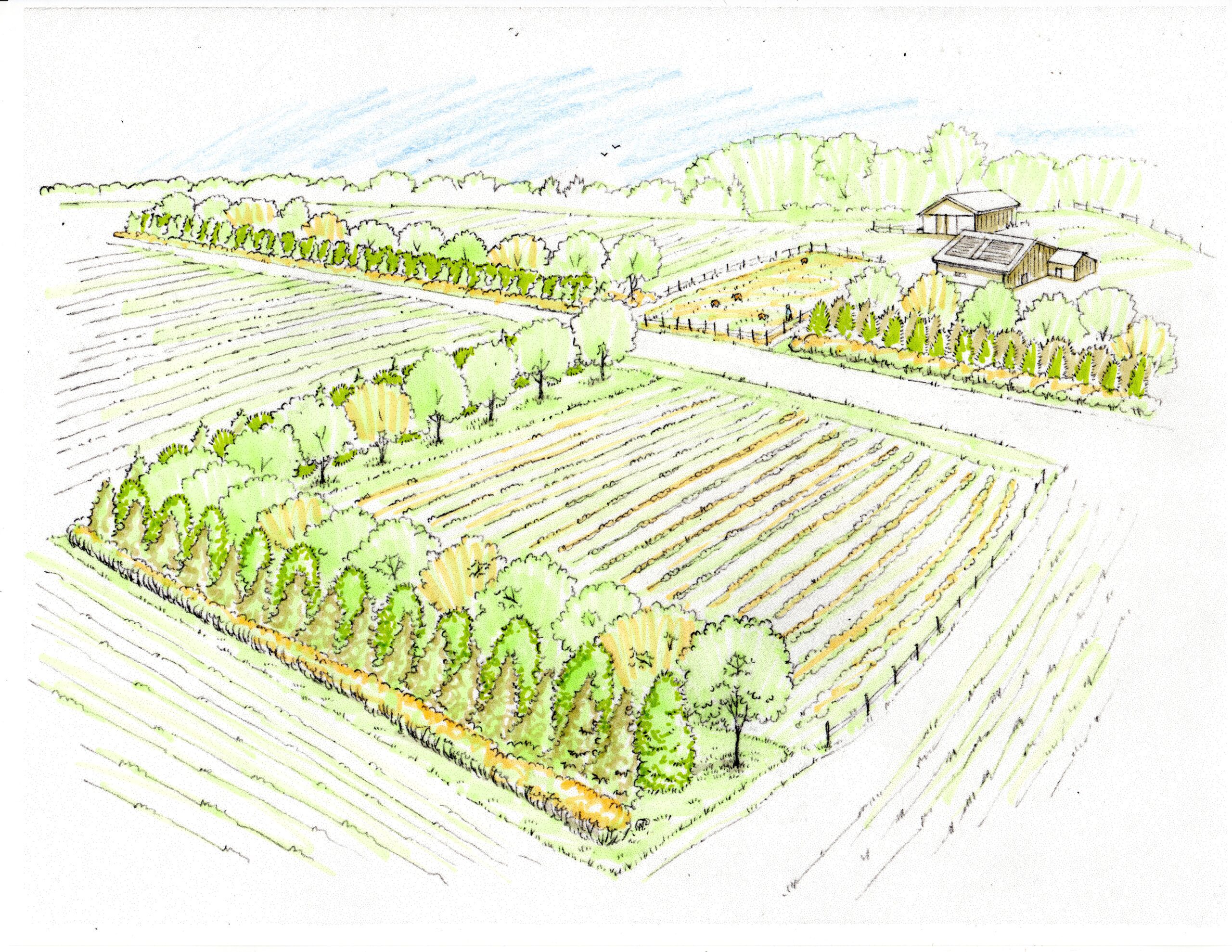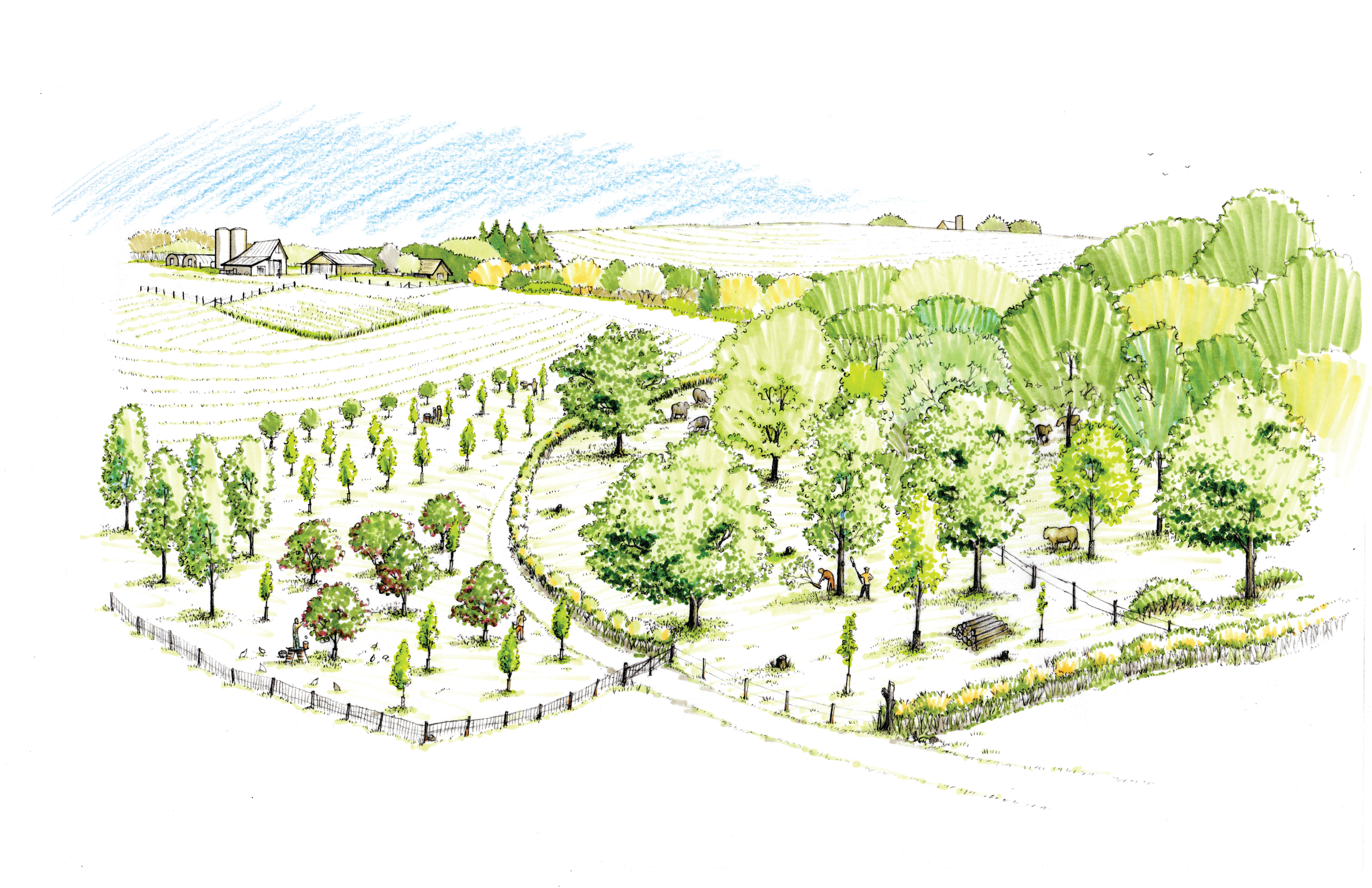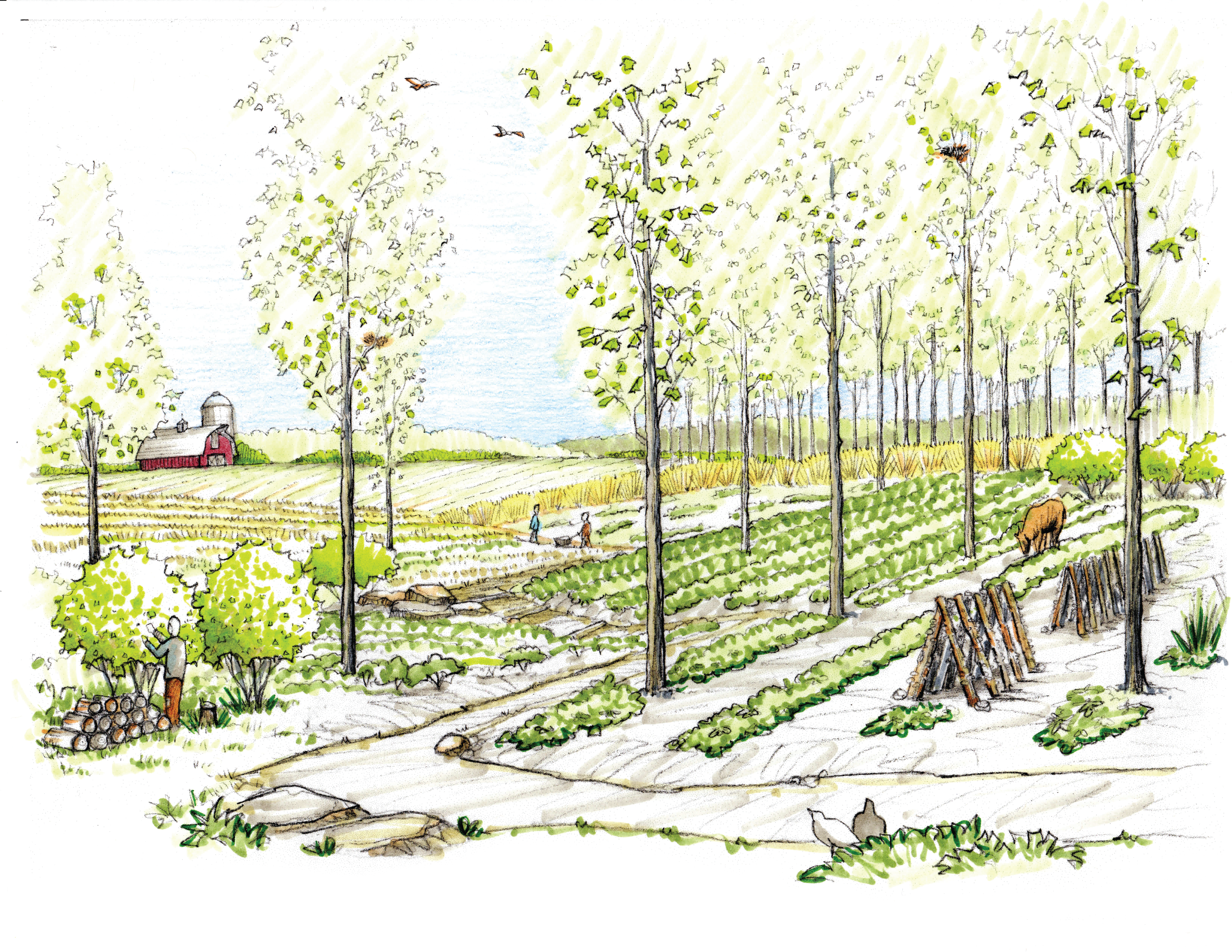Sustainable and regenerative farming that includes trees shrubs, and other perennials


Windbreaks
Windbreaks are strips of trees and shrubs planted along the edge of fields. Already common on the landscape, farmers who plant windbreaks protect soil against wind erosion and can protect wind-sensitive crops from damage. Windbreaks require farmers to take area out of commodity crop production. Incorporating tree and shrub crops into windbreak helps to offset loss in acreage. Windbreaks facilitate greater water availability to nearby crops to support yield and can also filter and block dust and pesticide drift from neighboring farms.

Silvopasture
Silvopasture describes trees integrated into livestock pastures. Farmers graze animals on grasses and the fruit, nut and seedpods that fall from the trees. Well-managed livestock can be vital to making farms function as healthy ecosystems. Livestock help clear weeds and control insects and pests. They scratch and dig to prepare ground for planting and spread and cycle nutrients through excretion. A silvopasture system can be established by subtracting trees from a wooded lot, or by adding trees to a pasture. Many farmers plant trees in paddocks that offset costs for fencing. It also adds an option to harvest timber, fruit, or nuts from the system — an extra income option for farmers. Harvesting fruit or nuts from a silvopasture system requires added attention to food safety. Common sense practices, such as grazing animals on fallen fruit and nuts after harvest, reduces risk of food contamination.

Alley Cropping
Alley cropping is the cultivation of crops in between widely spaced rows of trees or shrubs. Their deep perennial roots capture nutrients that shallow annual crop roots cannot, increasing the productive potential of the agricultural system. Alley cropping with timber, fruit or nut trees can add income streams to diversify farm revenue. Plus, trees reduce wind stress on crops, stabilize crop temperatures, and regenerate soil. Alley cropping can add complexity to a farm and requires long-term access to land to realize the full benefits of the investment.

Forest Farming
In forest farming or food forests, trees of different sizes produce nuts and fruit, while shade-tolerant crops are grown under their canopy. Farming in the woods can be done without major disturbance and provide additional income in forests typically just managed for timber. Cultivating mushrooms or harvesting herbs or medicinal plants are common forest farming practices. Food forests are dense, multi-story plantings often established on public land for the community to share in the harvest.

Riparian Forest Buffers
Riparian forest buffers are trees and shrubs planted alongside a stream, lake or wetland. The trees help slow runoff from the fields and stabilize the soil during heavy rains and flooding. The root systems filter nutrients before they enter into the waterway, protecting clean drinking water and fishing for communities downstream. Tree canopies along waterways keep water temperatures cool for fish, and branches that fall into the water create wildlife habitat for amphibians. If buffers are planted with nut or berry shrubs, for example, farmers could benefit from adding income potential to marginal cropland. Alternatively, some farmers choose to take productive cropland out of production to extend riparian buffers and add wildlife habitat for birds and other pollinators to their land.

RESOURCE
The Agroforestry Foundations course is designed to introduce you to a diversity of agroforestry practices, financial arrangements, farm designs and business models while helping you reflect on your own personal values and goals.

